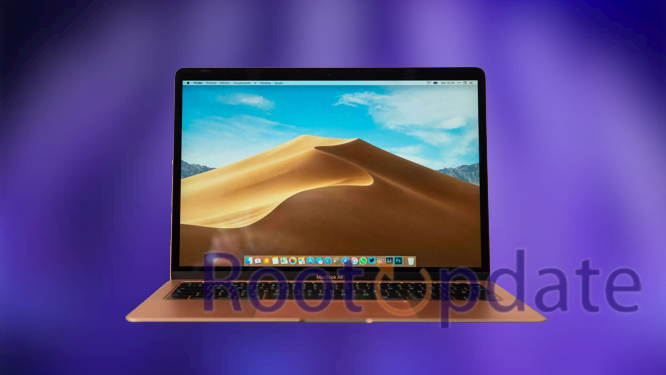Advanced Date and Time setting missing in Ventura: If you’re running MacOS Ventura and have noticed that the Advanced Date and Time setting is missing, don’t worry – you’re not alone. This is a bug that affects a small number of users, and there is a simple fix. In this blog post, we’ll walk you through the steps to take to get your Advanced Date and Time setting back. We’ll also explain what may have caused the setting to disappear in the first place.
How to change the date and time on your Mac
Table of Contents



If you’re running MacOS Ventura, you may have noticed that the Advanced Date and Time setting is missing from the System Preferences. This can be a problem if you need to change the date and time on your Mac, but don’t worry – we’ve got you covered.
In this article, we’ll show you how to change the date and time on your Mac using the Terminal. First, open the Terminal application. You can find this in the Utilities folder in your Applications folder.
Once the Terminal is open, type in the following command:
sudo systemsetup -setusingnetworktime on
This will enable the use of network time on your Mac. Next, type in the following command to set the date and time:
sudo systemsetup -setdate “MM/DD/YYYY” “hh:mm:ss”
Replace “MM/DD/YYYY” with the current date and “hh:mm:ss” with the current time. For example, if today’s date is June 10th, 2016 and the current time is 3:15pm, you would type in sudo systemsetup -setdate 06/10/2016 15:15:00 . Once you hit Enter, your Mac’s date and time will be updated!
How to set the time zone on your Mac



If you’ve recently updated to MacOS Ventura and noticed that the Advanced Date and Time setting is missing, don’t worry – you can still set the time zone on your Mac. Here’s how:
1. Open System Preferences and click on Date & Time.
2. Click on the tab labeled “Time Zone”.
3. Select your current time zone from the drop-down menu or use the map to choose a different time zone.
4. Close System Preferences and your time zone will be updated!
How to set daylight saving time on your Mac



Assuming you’re running macOS Ventura, open the Date & Time pane of System Preferences and click the checkbox next to “Set date and time automatically.” By default, this option is turned on.
If you’re in a different time zone than the one set on your computer, you can turn on the “Set time zone automatically using current location” option. This will use the geolocation feature of your Mac to determine your current location and set the time zone accordingly.
You can also manually set the time zone by clicking the “Set date and time automatically” option and then selecting a city from the drop-down menu.
Once you’ve set the date and time, daylight saving time (DST) should be automatically enabled. However, if it’s not, you can manually enable it by clicking the “Daylight Saving” tab in System Preferences and then checking the box next to “Enable daylight saving time.”
How to fix the Advanced Date and Time setting missing in MacOS Ventura



If you’re running MacOS Ventura and noticed that the Advanced Date and Time setting is missing, don’t worry – it’s an easy fix. Simply open System Preferences and go to the Date & Time pane. Click on the “Date & Time” tab at the top of the pane, and then check the box next to “Show date and time in menu bar.” This will add the Advanced Date and Time setting back to your MacOS Ventura system.
Using Terminal Commands



If you’re a power user of MacOS, you know that the Terminal can be used for a lot of different tasks. One of those tasks is setting the date and time. However, in MacOS Ventura, the “Advanced Date and Time” setting is missing from the Terminal.
This can be frustrating if you’re used to using the Terminal to set the date and time. However, there’s an easy workaround. You can use the “Set Date and Time” command instead. This command will let you set the date and time from the Terminal just like the “Advanced Date and Time” setting did in previous versions of MacOS.
Here’s how to use the “Set Date and Time” command:
1. Open the Terminal.
2. Type in “sudo date” followed by space then type in your desired date and time using this format: MMDDHHMMYYYY (MonthDayHourMinuteYear). For example, if you wanted to set the date and time to January 1st at midnight, you would type “sudo date 010100002024”.
3. Press Enter/Return on your keyboard.
4. Enter your password when prompted and press Enter/Return again.
5. Done! The date and time will be updated immediately.
By Editing GlobalPreferences.plist
In order to fix the Advanced Date and Time setting missing in MacOS Ventura, you need to edit the GlobalPreferences.plist file. This file is located in the /Library/Preferences/ folder.
To edit the file, you will need a text editor such as TextEdit or BBEdit. Once you have opened the file, look for the following keys and change their values:
HideClock – Set this to false
ShowDate – Set this to true
ShowDay – Set this to true
Once you have made these changes, save the file and restart your computer. The Advanced Date and Time setting should now be visible in System Preferences.
You can Also Add the Below given line to the file and Save:
<key>AppleICUDateFormatStrings</key> <dict> <key>1</key> <string>MM/dd/y</string> </dict>
Related:
Conclusion
If you’re missing the Advanced Date and Time setting in MacOS Ventura, there’s an easy fix. Just open the Terminal and enter the following command: defaults write com.apple.iTools “Advanced – Date & Time” 1 This will re-enable the setting and you’ll be able to access it from the System Preferences panel once again.
